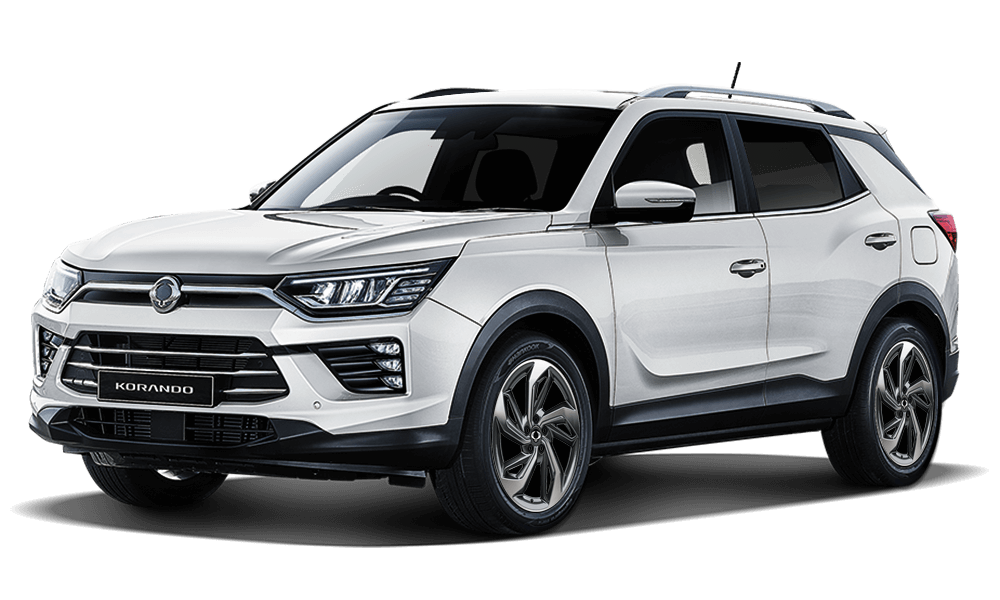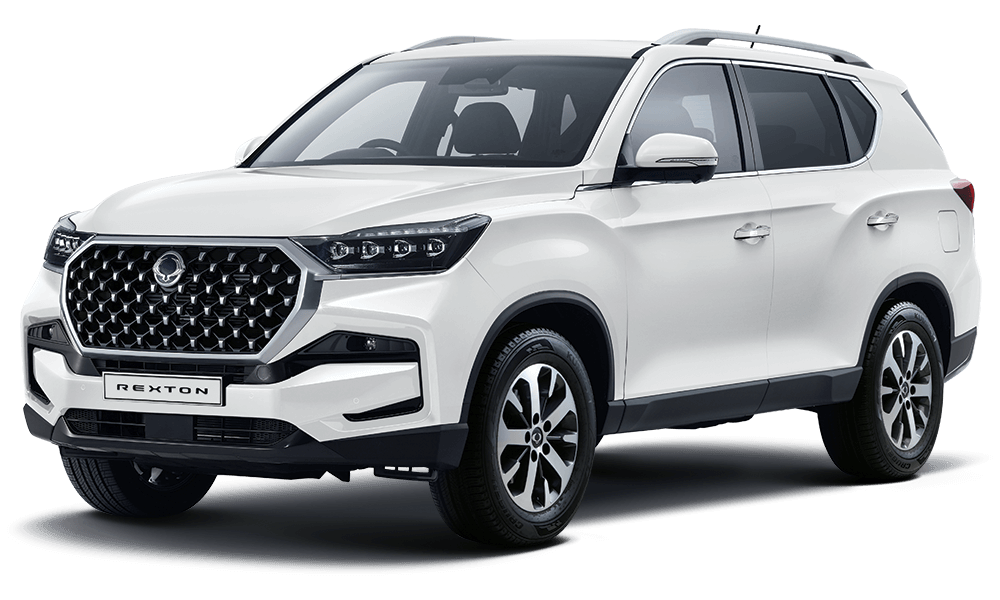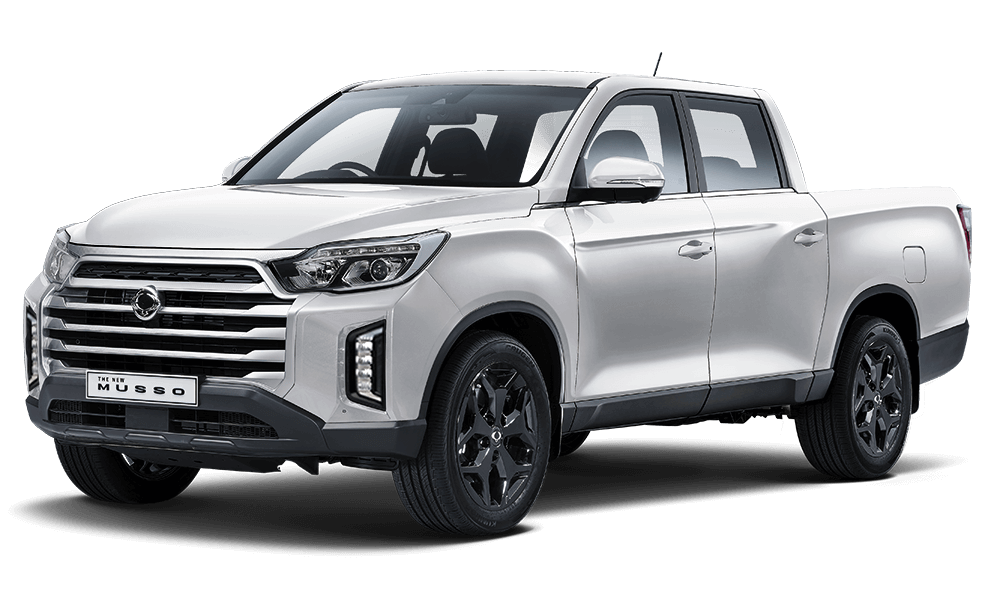SsangYong Musso 2019 review

Review courtesy of CarAdvice
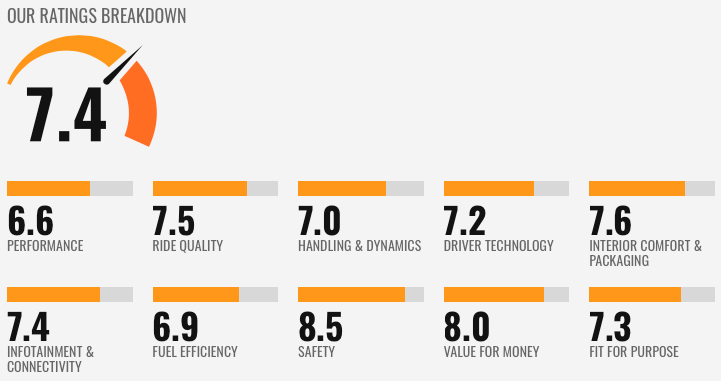
|
7.9L |
133kW |
195g |
N/A |
SsangYong is back in Australia, and its most important model is the Musso. We see how the Korean 4WD ute stacks up.
SsangYong is a brand with a somewhat chequered history in Australia. Although loved by many for simple, old-tech drivelines and a fairly rugged capability, some could barely handle looking at them. Some reliability issues reared their heads over the years, and the brand went on an indefinite hiatus after a falling out with the local distributor.
SsangYong enthusiasts (I know you’re out there), rejoice. Because the brand is back. And this time, it’s a fully factory-backed subsidiary of the Korean headquarters. The product line is practically all new, and they are coming in guns blazing with a seven-year, unlimited kilometre warranty.
The Musso is returning, putting a Korean flavour back into the 4X4 ute segment. It’s going to be competing with some sharp driveaway pricing, and have a few interesting points of difference over the competition. It starts with a fairly basic EX with a manual transmission for $30,490, or $32,490 for an automatic gearbox. Jump up one specification to the ELX auto, and the price is $35,990. At the top is the Ultimate, which has a $39,990 pricetag.
That warranty is the best out of all 4WD Utes, regardless of price point or manufacturer. Seven years and unlimited kilometres matches it with Kia, and it also comes with seven years’ of servicing and roadside assistance. This is a great thing, and groundbreaking for the segment.
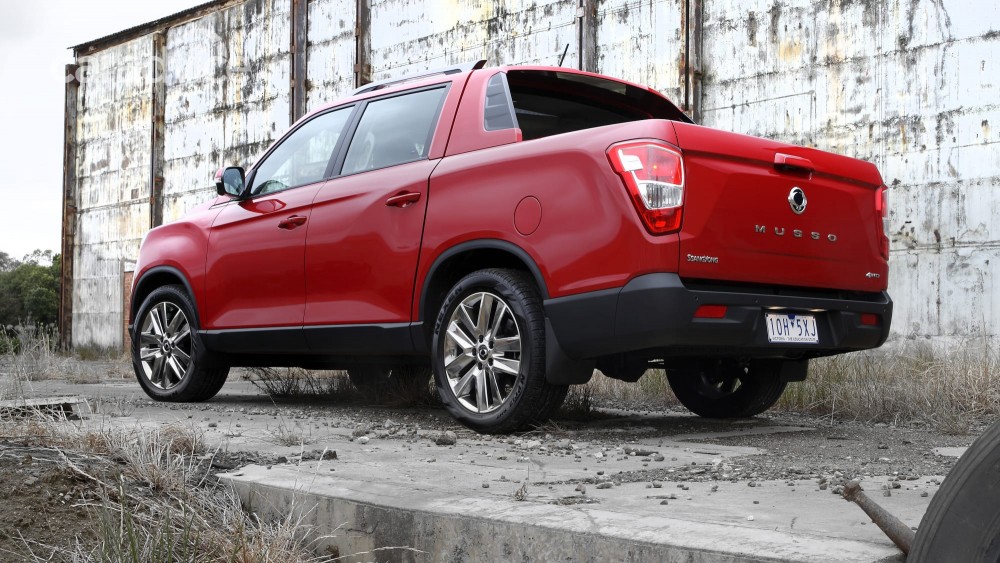
A negative take on it says that SsangYong is going out on a limb with something to prove, while a more positive spin is that it has superb faith in the reliability of its product. Either way, the consumer wins.
The rear suspension of the Musso is a five-link setup with a panhard rod, using a single-rate coil spring and disc brakes. The only two other Utes with coil springs and disc brakes are Ford’s Ranger Raptor and Ram’s 1500. Lofty company.
Along with some fairly conventional IFS struts, the ride is pretty good. Having a short-ish wheelbase and 20-inch wheels, along with a decent 790kg payload could spell disaster for any kind of ride compliance. However, that’s not the case. The Musso feels fairly well planted and stable along the bitumen and high speed dirt, with only big bumps and serious corrugations, that would affect any other ute similarly, becoming irritable or skippy. When it is bumpy, we did notice the rear tub liked to dance around noticeably on it its mounts. Presumably, it’s mounted onto the chassis with some rubber isolation to help with NVH.
The Musso has been earmarked as first in line for a localised Australian tune, which will be starting some time in the next three months. This is a first for the brand anywhere in the world; after being enamoured with what other Korean manufacturers have been able to do with a local tune for Australia. When this new tune will be available is a question we don’t have the answer to yet, however we understand the new tune will be available to retrofit as an option for the models sold beforehand.
Those overall NVH levels, by the way are quite good as well. While the 2.2-litre engine might not have the same overall poke as Ford’s ‘BiTurbo’ two-litre engine, it is quite similar in terms of refinement. It’s noticeably muted at idle, when the bonnet is popped and you’re leaning in for a look. When under strong throttle, it doesn’t get too intrusive either.
The engine is a far cry from the old Mercedes-sourced powerplants the Musso used to roll with back in the mid 2000s. That 2.9-litre engine had a fairly enviable reputation as being a stout servant over long kilometres, but was also fairly agricultural by contemporary standards.
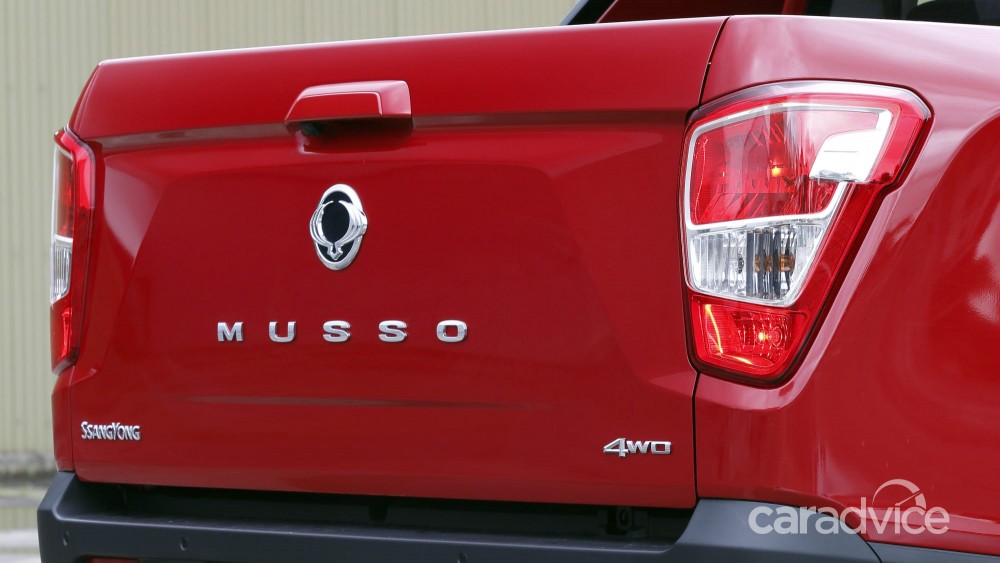
The new engine, which has a 2.2-litre of capacity across four cylinders, is SsangYong’s own. Making 133kW at 4000rpm and 400Nm at 1400-2800rpm, the Musso is not as powerful as some utes it’s trying to sidle up to. You can notice it behind the wheel; progress is never really offensively slow, unless you’ve got high standards up steep inclines.
You’ll notice the six-speed Aisin automatic gearbox (there is also a manual, but it wasn’t available to test) is geared more for economy than performance. Sixth ratio leaves the engine turning at a lowly 1500rpm when at 100km/h. First and second gear are decent enough for initial take-up, but don’t depend upon any brisk acceleration after that.
Listed fuel economy is 10.9L/100km, and we were getting around 11, over a combination of hilly Victorian backroads, as well as dirt roads and low-range stuff.
If you’re like me, you’d be wondering why the Benz-derived seven-speed automatic gearbox wasn’t available for the Musso. It was never an option from the factory, according to SsangYong Australia. So, you’re stuck with the proven Aisin six-speed as your automatic gearbox on ELX and Ultimate spec.
SsangYong has nailed the important aspects of an interior quite well. Firstly, our test models all felt solidly bolted together against thrusted palms and digits; nothing really squirmed or squeaked. Buttons and touch gear are laid out nicely with some nice touches. Air conditioning is easy to control, and cold enough for the size of the cabin. You’ll notice some air vents for the second row, as well, along with some power outlets. The $40,000 Ultimate specification has a nice variety of different surfaces for a more premium feel. Some might find the ‘wood’ panel above the glovebox a little kitsch for their taste, but you can’t really knock the rest of the interior.
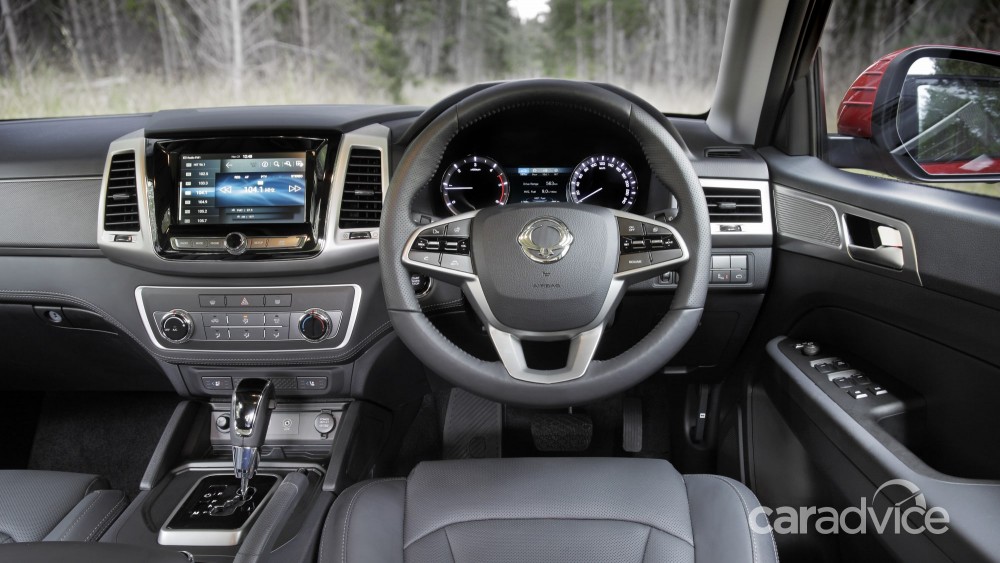
Being based on a 4WD wagon, rather than the other way around, means the Musso has made a strong preference for a better second row rather than a larger tray. Foot, knee and head space at the back are all as good as you can ask for in a ute. Although the seats don’t have a stack of size or support under the thigh, they are plenty comfy enough. Go for the Ultimate specification, and you’ll get an almost unheard of heated second row, as well as heated/ventilated front row.
Comfort up front is equally impressive. The Musso feels fairly low slung and car-like in terms of seating position and comfort. Seats are soft and comfy, and seem well-finished overall. Combined with low overall engine and road noise, you have a fairly refined and impressive experience on the road. The worst noise was coming from the Mountaintop roller cover, which had a bit of a chatter over the corrugations.
The infotainment unit doesn’t have any built-in navigation. Rather, it depends on your smartphone smarts for that kind of thing via CarPlay or Android Auto. The 8.0-inch display is a good size and is fairly responsive, however it does seem a little dark and dull. Response time does seem pretty good.
The worst criticism I can level at the interior was seeing a few witness marks on the hard plastics that make up the back of the first-row seats. Over years this kind of thing is inevitable, and will make the car feel a bit dated. While it’s not exactly Euro-chic, the interior is solid, well laid out and nicely appointed.
Another strong point of this Korean 4WD ute is safety. AEB and FCW are both standard across the range. Go up to the ELX, and you get blind-spot detection, lane change assist and rear cross-traffic alert. Ultimate specification gets a good 360-degree camera to improve safety and manoeuvrability. That levels the Musso up with Ford’s Ranger and Mercedes X-Class in active safety, for now. SsangYong’s autonomous emergency braking operates at speeds between 8-60km/h.
Alright, let’s talk off-road. Those 20-inch wheels (in Ultimate spec) aren’t a great or natural choice for a 4WD ute destined for long stints amongst the dirt, mud and sand. But the 255/50 R20 rubber does give you some sidewall to play with, so it’s not completely bad. Look for the ELX 18-inch wheels instead, with an extra 25mm of sidewall to play with. What is good is the automatic Eaton MLocker in the rear, which locks things up when there is more than 100rpm of variation between the wheels. It’s good system, which has benefits similar to a limited-slip setup, both on-road, and off.
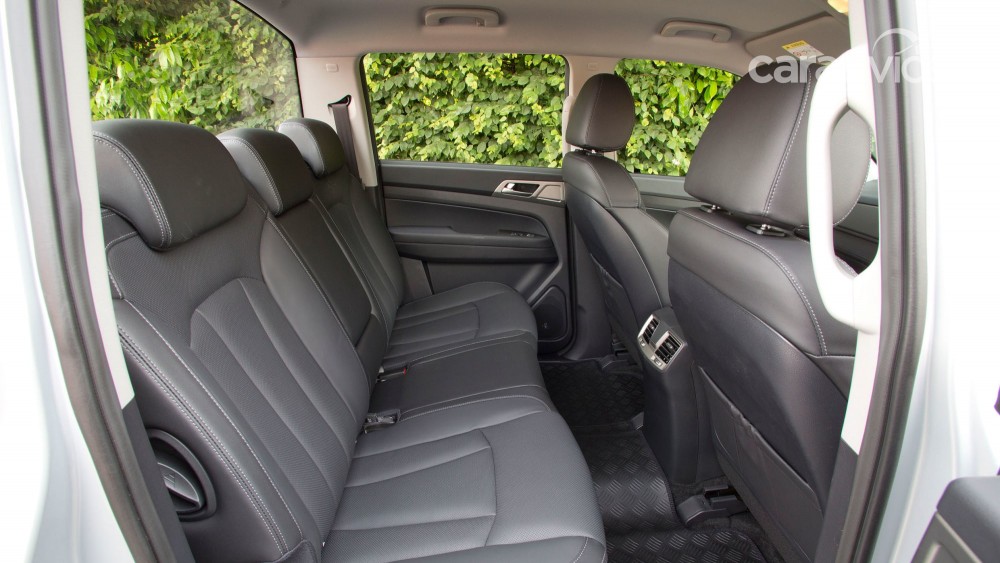
As is usual, our off-road testing was far from exhaustive or ultimately conclusive. But I was able to come away with a few important tidbits. Firstly, the biggest limiting factor of the Musso is ground clearance.
The quoted ground clearance is 215mm, but although the wheelbase is relatively short (3100mm, or 122 inches for those playing at home) we found ourselves bottoming out on some fairly banal obstacles. Closer inspection revealed a crossmember around the gearbox at the front, and a lower control arm for the rear suspension, as the main culprits. They are low-hanging, and are also bluff-faced against incoming hits. This will be, by far, your first limiting factor when off-roading in a Musso, and puts it behind the pace compared to other 4WD Utes on the market. For light off-roading, it’s probably fine. But so is a softroader, so it’s a compromise.
Along with some assistance from traction control, you’ve got a pretty good Hill Decent control that holds around 5km/h quite smoothly and without fanfare, and some decent engine braking via the overall transfer case reduction ( 2.483:1). Not great, but good enough.
While the ride is good on bitumen and fast dirt, I found the bump stops without too much trouble along rougher tracks. Spacing between bump stops and the chassis was just over two fingers at the rear, while bottom-outs are handled by shock absorbers at the front end. Interestingly, the swaybar is mounted onto the top of the spindle at the front end, something I hadn’t seen before. There’s not a lot of underbody protection either, only really consisting of the first chassis crossmember that comes down low and mounts the fairly long lower control arm.
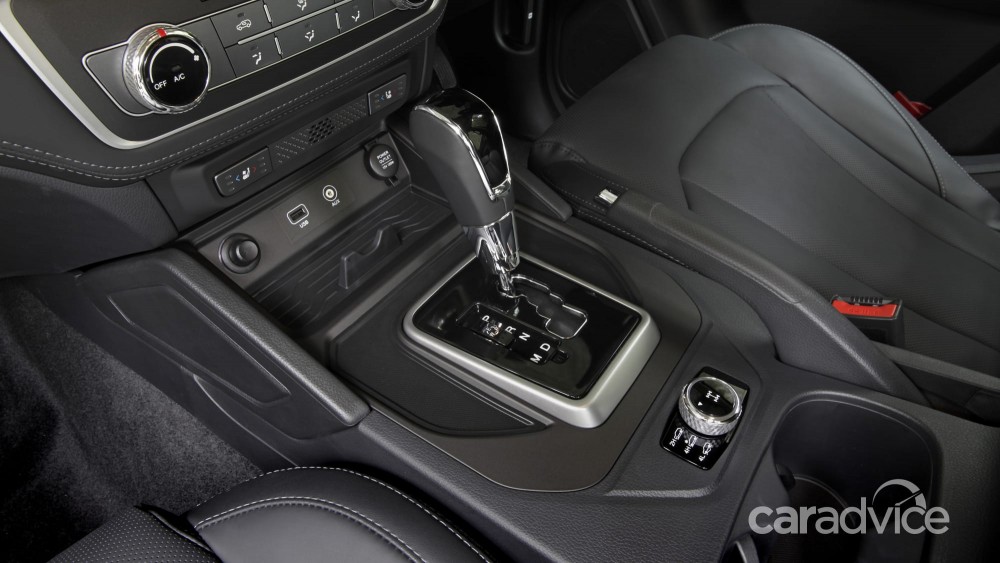
It’s interesting to note that along with some accessories like bullbars, side steps and towbars, SsangYong is investigating a suspension lift kit as another accessory. This would certainly help out off-road.
Another interesting point is the size of the tray on the Musso. SsangYong tells us it’s the deepest in class, but it’s also certainly the shortest. The sailplane-style sports bar makes it look even smaller, as does the roller cover. You could fit a couple of hay bales for those Dexter calves you have down at the hobby farm, but it’s not really big enough for anything serious or commercial.
For comparison’s sake, a Mitsubishi Triton has 5280mm of overall length, with a 3000mm wheelbase. Load length’s listed at 1520mm. A Ranger is 5362mm long with a 3220mm wheelbase, sporting a 1549mm tub. The Musso is 5095mm long with a 3100mm wheelbase, with 1300mm of tub length. It’s a shorter overall vehicle, but favours cabin space and comfort over raw load space.
You could argue the same thing about any other styleside dual-cab ute in Australia, though. They aren’t really a proper workhorse in the true meaning of the word; that would be something single-cab or extra cab, with a flat tray on the back. Nobody I know puts pallets onto tubs, they all use big trays. And considering how many 4WD Utes you see driving around with precious little or nothing in the back, the Musso will suit many Australian buyers out there.
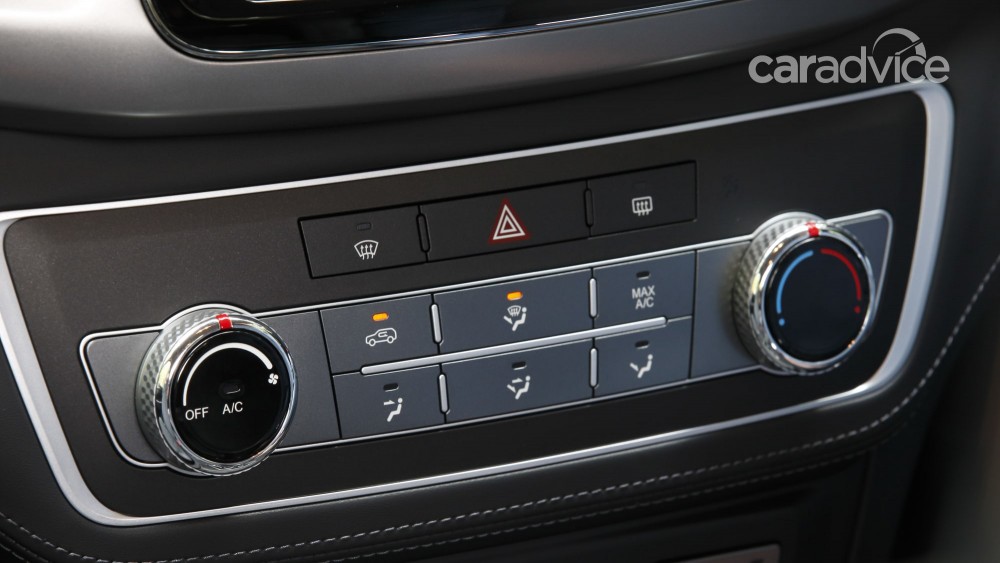
If you want a bigger, longer 4WD ute, then SsangYong will have you covered in Q2 2019. There’s a long-wheelbase version coming soon, which will have around 300mm of additional length added to the tray. They’re bumping out the wheelbase to accomodate it, and throwing leaf packs under the back tuned for a bigger payload.
In a way, the Musso will pick up where it left off: a slightly left-of-centre Korean offering with sharp pricing and good inclusions. While it’s a bit of a compromise off-road, the good levels of comfort and refinement go a long way. And the warranty is an absolute cracker. It’s definitely worth jumping behind the wheel for a test drive, to see if that ride and interior tickles your fancy for the money.
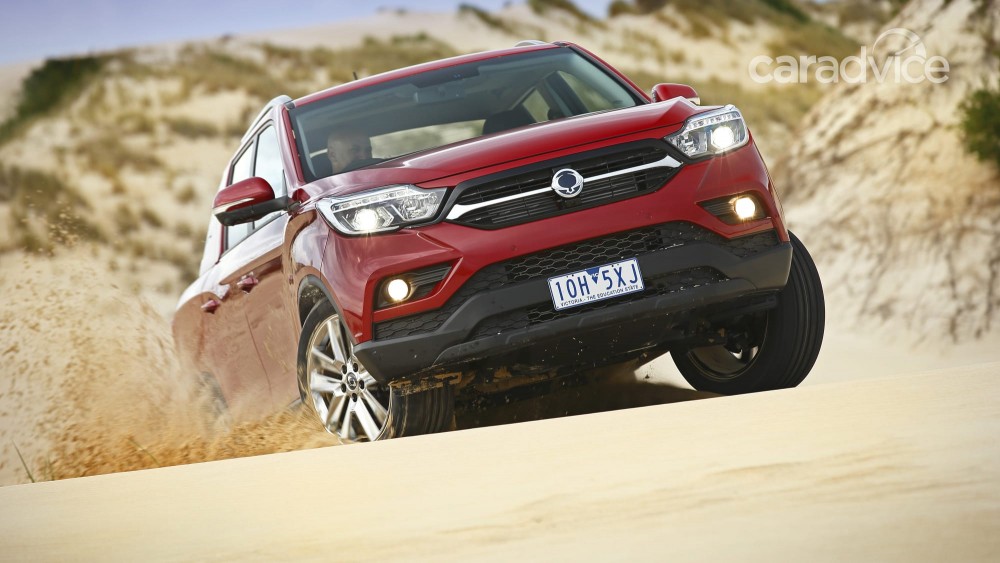
If you’re like me, you’d be interested to see what SsangYong can do with a longer wheelbase model, and some decent accessories. Its pricing puts the Musso close to Mitsubishi’s venerable and respected Triton, which no doubt will be the strongest competition, regardless of the disparity of inclusions. But don’t forget, the Triton’s price might move north with a new model coming to Australia very soon.
Good ride, comfort and refinement
Segment-leading warranty
Good safety and inclusions for the price
Engine feels a little underpowered at times
Low ground clearance for off-roading
Tub and payload on the skinny side







